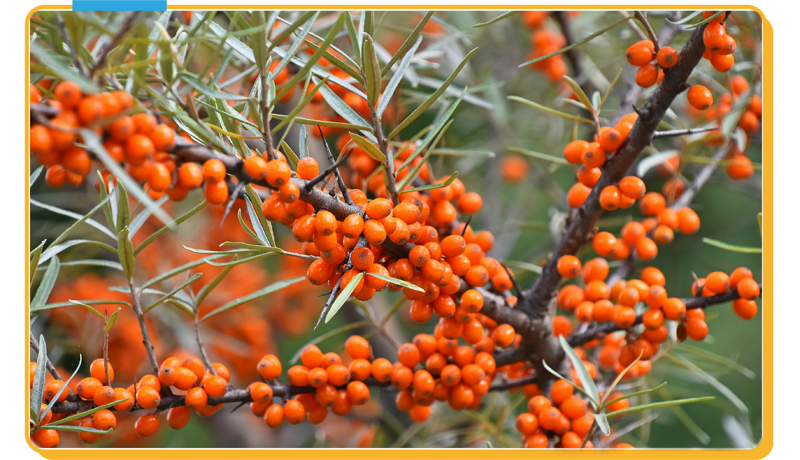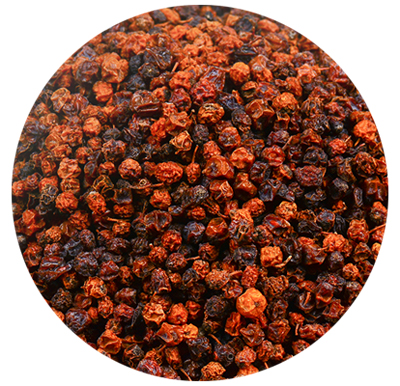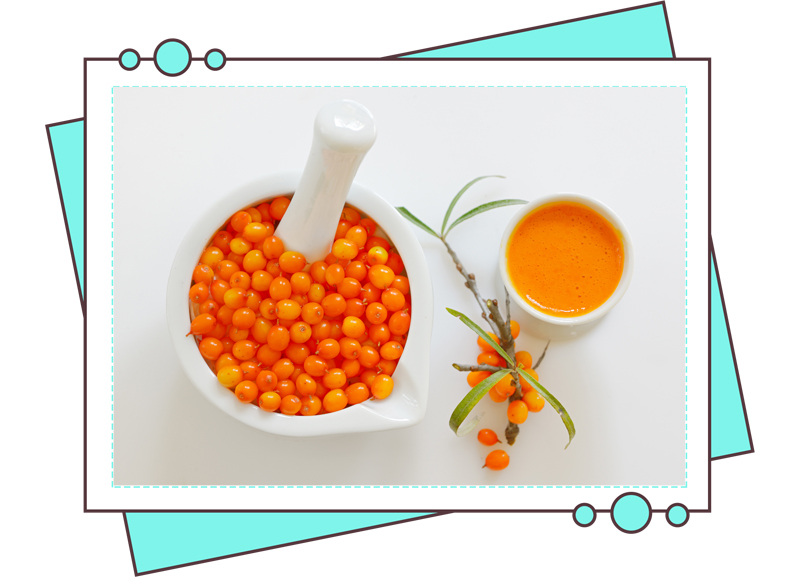Seabuckthorn, also known as hippophae rhamnoides and sea berry, is a shrub with extremely strong vitality. It generally grows in dry, cold and barren mountainous areas. China is the country with the most seabuckthorn resources in the world, with a wide distribution area, totaling about 1.33 million hectares. It is mainly distributed in Shanxi, Tibet, Qinghai, Inner Mongolia, Gansu, etc, accounting for more than 99% of the world's sea buckthorn resources.

Seabuckthorn fruit and leaves are rich in bioactive ingredients and are precious medicinal and edible plant resources. Due to their high nutritional value, it has become an emerging health food. Meanwhile, seabuckthorn also plays a very important role in preventing soil erosion and improve the ecological environment.
China is the country with the earliest history of using seabuckthorn in medicine. Seabuckthorn has been used as a common medicine for treating various diseases by Tibetan and Mongolian medicine for a long time. As early as 1,300 years ago, "The Medical Investigation of Lunar King" and "The Four Medical Tantra" of the Tang Dynasty and the "Jing Zhu Materia Medica" of the Qing Dynasty all recorded the medical uses of seabuckthorn. In 1977, the Ministry of Health officially included seabuckthorn in the "Chinese Pharmacopoeia" for the first time, and successively announced seabuckthorn as a medicinal and edible variety.
1. Invigorating Spleen and Promoting Digestion
Seabuckthorn is sour and astringent but warm in nature, can stimulate appetite and help digestion, so it is suitable for treating stomach pain caused by poor appetite or indigestion. It belongs to the spleen and stomach meridian and has the effection of strengthening the spleen, and can be used to treat spleen deficiency, spleen and stomach impairment of both Qi and Yin.
2. Relieving Cough and Reducing Sputum
Seabuckthorn enters the lung meridian, moistens the lungs, relieves cough and eliminates phlegm, and can be used to treat cough with phlegm and deficiency of lung Qi.

3. Activating Blood Circulation to Dissipate Blood Stasis
Seabuckthorn has the function of promoting blood circulation and dispersing blood stasis, and can be used to treat bruises and swelling caused by trauma, and women amenorrhea and irregular menstruation caused by blood stasis. It belongs to the heart meridian and benefits on chest pain and heartache.
4. Delay Aging
Seabuckthorn is rich in superoxide dismutase, which can block free radicals produced by peroxidation in the body. This free radical is closely related to the occurrence of human aging, so take seabuckthorn can help maintain skin elasticity and delay aging.

Ingredients: Seabuckthorn, Sophora Flower-Bud, Chrysanthemum
【Effects】Clearing liver-fire and dispelling wind, lowering fire and improving eyesight, quenching thirst and relieving restlessness, dilating blood vessels, and regulating blood lipids. It also benefits on the auxiliary treatment of cardiovascular and cerebrovascular diseases. It is suitable for long-term drinking, especially for regulating red eyes, blurred vision, thirst, and restlessness.
Ingredients: Seabuckthorn
【Effects】Promoting blood circulation for removing blood stasis, resolving phlegm and relieving cough. It is suitable for coronary heart disease, cerebral arteriosclerosis, chronic bronchitis, chronic fatigue syndrome, etc.